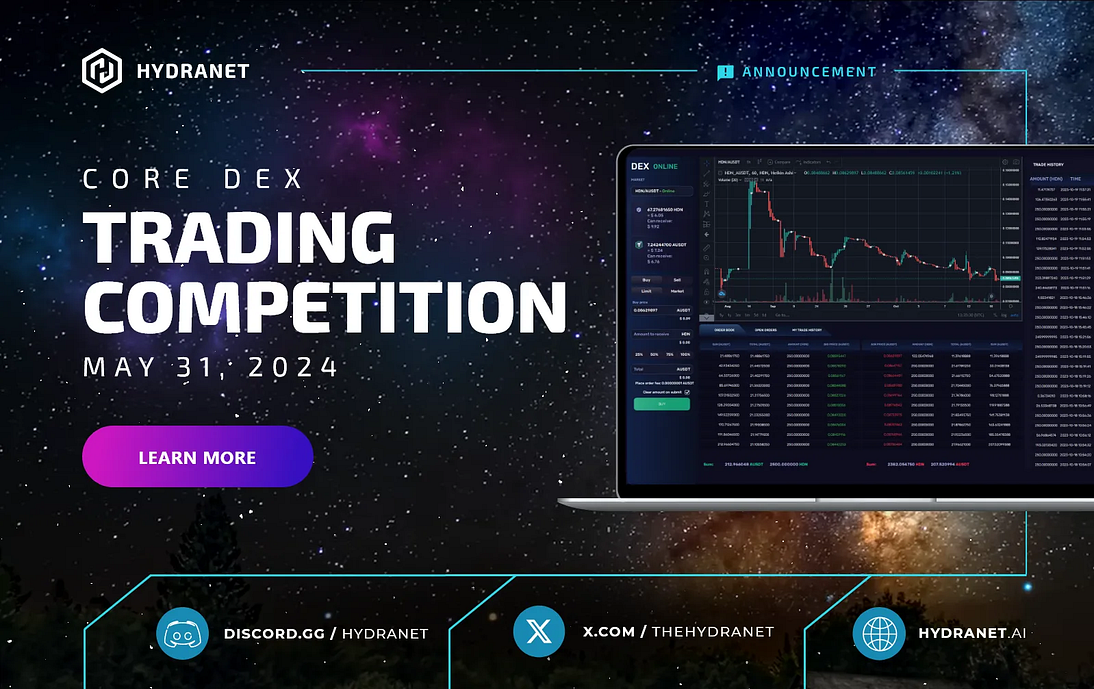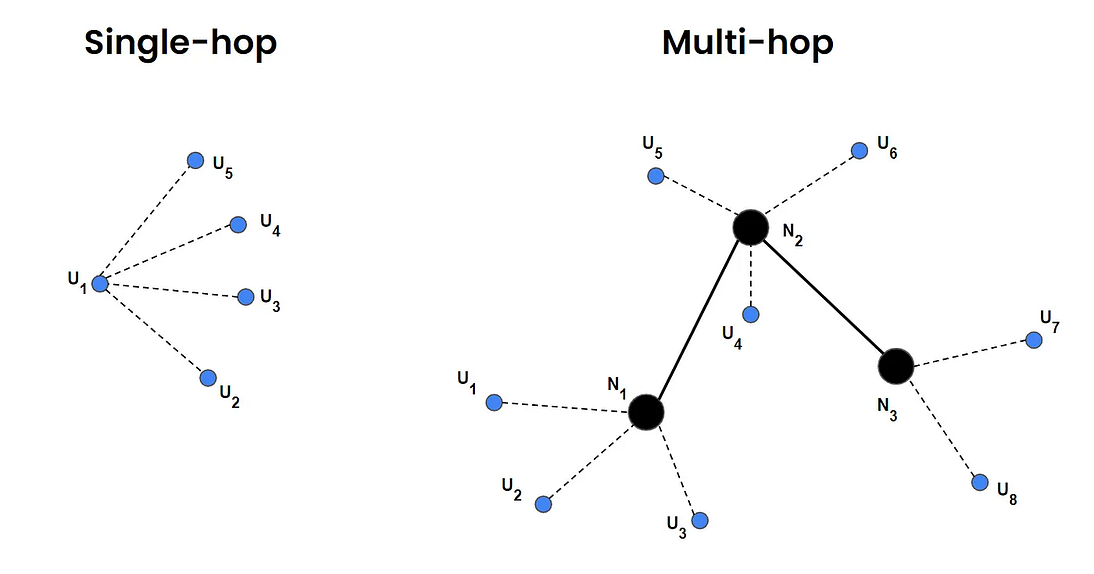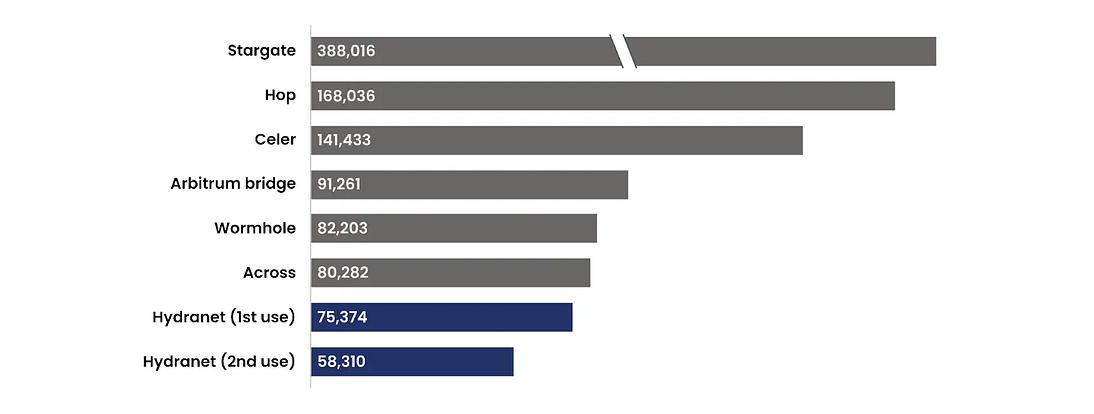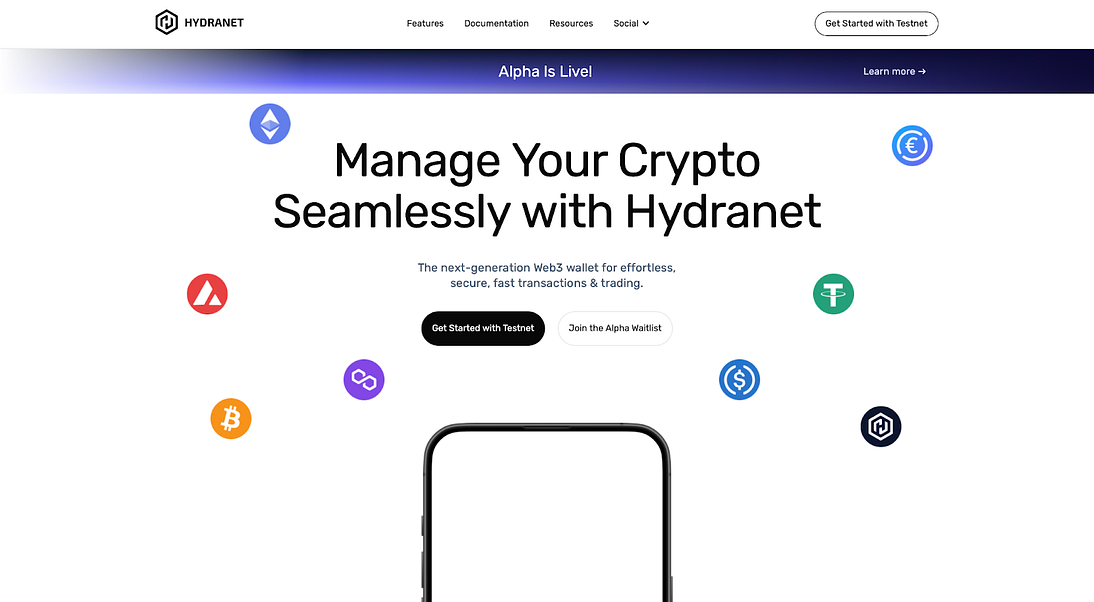Hydranet Yearly Recap — 2024

What a year we’ve had! We started 2024 strong and finished stronger, setting a new standard for how to trade crypto, without suffering slow and expensive blockchain confirmations while never giving up custody of your funds. We still have roads to cross but we’ve come such a long way already, with the Alpha release marking one of our biggest achievements of 2024! Let’s take a moment to reflect on our achievements this year and prepare for an even better 2025!
A promising start — NOVA
Do you remember how last year, 2023, ended? In October, we announced Hydranet’s entry into the web3 world, culminating in an AMA with Wolf of Alt Street in December. It was during that session Hydranet was showcased in action within a web browser for the very first time. A lot has happened since then!
For those who have joined us recently, Hydranet may seem synonymous with the web. But before entering the web3 world, our unique trading solution existed in another form — a downloadable desktop client known as the Hydranet Core DEX. This desktop application held many of the features needed to engage in off-chain trading, including a multi-currency wallet, built-in off-chain nodes, an off-chain order book, and a one-click trading feature called SimpleSwap. However, the Core DEX fell short in one crucial aspect — it wasn’t truly decentralized. It also lacked the user experience improvements needed to attract broader crypto communities, particularly in terms of cost-efficiency and ease of use. Despite these shortcomings, the Hydranet Core DEX served as a powerful proof-of-concept for our off-chain trading solution, and recognizing its limitations, we began the transition to bring Hydranet into the web3 world — making it fully decentralized and as user-friendly as both modern decentralized and centralized exchanges.
In early 2024, our team worked tirelessly to develop the first iteration of Hydranet for web3. This version focused on fundamental wallet functionality, while also incorporating advanced off-chain features for sending and receiving off-chain payments. A key highlight was the first public demonstration of off-chain nodes operating inside a browser environment. This breakthrough leveraged a cutting-edge synchronization protocol from the Lightning DevKit, enabling rapid off-chain node syncing taking the wallet to a ready state in no time.
Hold on a minute… Is running off-chain nodes in a browser really such a big deal? For years, the absence of browser-based off-chain nodes had been the biggest obstacle to creating a web version of Hydranet. The technology simply didn’t exist until we made sure it did in 2023. This groundbreaking solution was first showcased in Hydranet’s public testnet release, NOVA, as we approached the end of March 2024. NOVA not only featured this technological leap but also included an early version of Hydranet’s Lithium network. This off-chain network is analogous to Bitcoin’s Lightning Network but designed for Ethereum and other smart contract-based blockchains.
As with any new technology, the NOVA release underwent rigorous testing by a closed group of 10 testers before its public release. This marked a major milestone: the first tangible proof of Hydranet and off-chain trading transitioning to the web. For the first time, users could access off-chain networks like Lightning and Lithium without needing to download and install software. A true game-changer!
A bid farewell — Hydranet Core DEX
As previously mentioned, the Hydranet Core DEX was the first iteration of Hydranet, showcasing our off-chain trading capabilities in a packaged downloadable desktop client. Up until the breakthrough of integrating off-chain nodes into a browser environment, the Core DEX was the state-of-the-art solution for off-chain trading, holding the necessary off-chain features and functionalities required to engage in off-chain transactions.
For the Hydranet Core DEX, the year 2024 began with the release of the Lightwallet Swap Service Deamon (LSSD), a lightweight and headless encapsulation of the complete atomic swap logic on the client side, used to interact with the Hydranet order book — in simple terms, an API to the Hydranet Core DEX. The LSSD was released to a closed group of testers which provided valuable feedback to its design before it was released to the public.
By March, the Hydranet Core DEX saw an update to alight with Ethereum’s Dencun upgrade, which went live on March 13, 2024. This upgrade primarily benefited Layer 2 rollups, improving Ethereum’s scalability, efficiency, and security. While its impact on our solution was minimal, adapting to Ethereum’s evolving ecosystem was crucial. Additional updates during this period included minor wallet and order book fixes, as well as the introduction of an ETH bridge pair between Arbitrum and Ethereum.
In May, we hosted Hydranet’s first trading competition on the Core DEX, designed to encourage engagement with the platform. Running for nearly three weeks, the event featured five reward tiers based on trading volume, with HDN tokens awarded for reaching each tier. Despite certain limitations, such as maximum channel rental sizes and order caps, the competition saw impressive results: around $100,000 in trading volume generated by just 20 participants, paying no network fees for their trades on our platform.

As we entered July, DAO Proposal #32 passed with unanimous support, marking the decision to sunset the Core DEX. Having successfully showcased the capabilities of our off-chain trading technology, it was time to focus entirely on Hydranet’s web version. Following the DAO’s decision, all open state channels were closed, and user funds were returned to their respective Layer 1 addresses. Shortly after, the Core DEX server was permanently shut down.
The Hydranet Core DEX served its purpose well, it showcased we are capable of bringing a new and innovative trading solution to the crypto industry. However, its user experience had notable drawbacks — it was unintuitive, costly, required a software download, and relied on outdated off-chain networks like Connext Vector for Ethereum. Despite these limitations, the lessons learned from its development, from the channel rental manager to its API, have been instrumental in shaping the web version of Hydranet. These insights have enabled us to significantly improve our product, making it more accessible, user-friendly, and truly cutting-edge for everyone in crypto.
Into the future — Alpha release of the Web DEX
The development of the Hydranet Web DEX has been continuous throughout the year. Early on, we onboarded Adinael, a new backend developer, to work closely with Fedeparma. After completing his first task, a token pricing API, he quickly began working on the Channel Rental Manager, a crucial component of our off-chain trading solution that proved to be time-consuming to develop. The Channel Rental Manager is a service that users can put to use to increase their state channel inbound liquidity, enabling them to receive off-chain payments and trade on our platform. Using Hydranet would be challenging, if not impossible, without it. The manager includes numerous features that must function seamlessly, including opening state channels, closing them at the end of the rental period, extending rentals, making rental fee payments with both off-chain and on-chain transactions, and allowing rental fee payments in tokens other than the one being rented, not to mention all the logics and validity checks in place for all the aforementioned features to function properly. With all these features in place, it’s not unexpected that we encounter bugs from time to time. But trust us when we say, they are getting fewer.
While the Channel Rental Manager was under development, work on the Lithium protocol was also underway. The Lithium protocol is an off-chain protocol similar to Bitcoin’s Lightning Network but designed for Ethereum and other smart contract-based blockchains. Development on Lithium began after it became clear that no other off-chain protocol met our requirements for cost, speed, and decentralization potential needed for our platform.
An early version of Lithium was completed and implemented already in the NOVA release of the Hydranet Web Wallet. Since then, the protocol underwent gas optimization in March, followed by the implementation of multi-hop transactions in June. These improvements culminated in the release of Lithium V2 in July, where the key feature was multi-hop transactions.

Multi-hop transactions allow users to send payments to anyone within the Lithium off-chain network using intermediate off-chain nodes (users) as routers. This feature is crucial for decentralizing our platform in the future and was one of the main reasons we decided to create our own off-chain protocol from the ground up. In other words, the release of Lithium V2 was a significant achievement!
As the Channel Rental Manager reached a more complete state, our development focus shifted in June towards the order book and matchmaking engine. Progress was steady, and we reached milestone after milestone across all major components — order book, matchmaking engine, (atomic) swap engine, fee system, and more. By early October, we were able to perform the first successful swaps between Bitcoin and Ethereum, a major breakthrough! To avoid premature celebrations, this achievement was announced in November along with an article explaining our order book’s architecture.
Although we are an off-chain trading platform, our order book draws inspiration from traditional on-chain automated market maker (AMM) models, using liquidity pools defined by price intervals. Being off-chain, however, offers a significant advantage: liquidity and price intervals can be adjusted freely without incurring any network fees. But what about limit orders on an order book? Our solution shines here as well. Users can place or remove an unlimited number of limit orders without paying any network fees. In fact, the same liquidity pool mechanisms are used for these orders, but with liquidity concentrated at a specific price point instead. As such, our order book is operating as a hybrid between the AMM models seen in traditional DEXs and the order books commonly found on CEXs. Best of all, users retain full control of their funds at all times, no matter the type of trade order! For a deeper dive into our order book, check out this article.
These three major components — the Channel Rental Manager, the Lithium protocol, and the order book — are what bring us to where we are now, with an Alpha release in our hands, working to stabilize the platform before we take the next big step in our journey. At the time of writing, we have already completed over 1,600 trades with over 96% success rate and received a ton of valuable feedback from our Alpha testers. Thank you so much!
More than awesome tech
Looking back on the past year, it’s clear that our journey was about more than development milestones alone. We’ve also achieved foundational updates, launched strategic initiatives, and cultivated community-driven advancements to reinforce Hydranet’s position in the crypto space.
We began the year on a high note with the release of the Hydranet Litepaper. This concise document captures the essence of our project vision — our “whys” and “hows” — in a format that’s accessible to everyone. From introducing Hydranet and outlining our technical implementation to highlighting the advantages of our exchange, the Litepaper serves as an essential resource. Whether you’re a community member, investor, external project, or centralized exchange, the Litepaper equips you with everything you need to understand and engage with our ecosystem.
Alongside the Litepaper, we unveiled the Tokenomics Simulator, a tool that allows community members to explore and better understand the mechanics behind Hydranet’s tokenomics. The simulator features two key components:
- Network Simulation: Allows users to experiment with different conditions to see how they influence the broader Hydranet ecosystem.
- Personal Simulation: Enables users to calculate potential rewards from running a Titan (Hub) or Guardian (Watchtower) in our network.
The Tokenomics topic will be revisited as Hydraet hits mainnet and we move into the next phase of our development, but if you have a great interest in the topic already you can give the simulator a try on your own or watch a simulator preview video here!
By February, prior to the NOVA release, we expanded our reach by listing HDN on two centralized exchanges: XT and Toobit, XT, with its massive user base of 10 million and $1 billion daily trading volume, opened doors to the established Asian market. Meanwhile, Toobit, an up-and-coming exchange nearing similar trading volumes, offered a promising avenue for growth.
While the new exchange listings generated buzz both externally and within our community, as the year progressed, we made strategic decisions to optimize our focus. In June, we decided to remove our liquidity from Toobit due to insufficient organic trading volume. This allowed us to concentrate on exchanges with higher user engagement and popularity. Similarly, on June 21, we temporarily hid our token ticker on WhiteBit, a decision rooted in financial prudence as we prioritized the Web DEX development. HDN remains fully tradable on WhiteBit, with deposit and withdrawal functionality intact. An email with a direct link to the trading pair was sent to the platform’s users. Nevertheless, we continue to recommend keeping HDN in personal cold storage for optimal security. We look forward to reactivating the ticker on WhiteBit when organic activity resumes.
In March, following the gas optimization of the Lithium protocol, we engaged in a study to evaluate our performance in the bridging market. Bridging the process of transferring assets like ETH across blockchains (e.g., from Ethereum to Arbitrum), represents a $70 billion annual industry. Leveraging our unique off-chain trading solution, we identified significant cost advantages.
To explore our advantages, we compiled five years’ worth of on-chain data from leading bridges, analyzing wallet activity, transaction frequencies, and asset volumes. Using this data, we looked closer at bridge transactions made in December 2023, examining to what extent Hydranet can seize market shares based on the total cost of the trade and what potential DEX fee revenues this would entail for us. Our findings were pleasing: Hydranet’s bridging solution is nearly 30% cheaper than our best-performing competitor, enabling us to potentially capture 86% of all bridge transactions that month. Fantastic! Our study culminated in an article explaining our advantages and a bridge calculator, allowing users to estimate their savings on previous bridge transactions if they could have used Hydranet instead of another bridge provider.

Our advancements with Lithium also led to an insightful AMA session in May, where we showcased its capabilities and explored its benefits for the Hydranet ecosystem. We also got to see the recent advancements live in action. For those unable to join live, a recording of the session is available. Leading up to the AMA, we engaged the community through competitions that encouraged spreading awareness of Lithium on social media.
Later in May, on Bitcoin Pizza Day, we were invited to participate in an XT Twitter Space event. Despite minor connectivity challenges, likely due to the high volume of AMAs that day, the session provided a platform to share Hydranet’s vision with XT’s followers. A recording remains accessible for anyone who missed it.
As the year progressed, our updates increasingly revolved around technical advancements for the Hydranet Web DEX. But by October, we introduced exciting new initiatives, including an “engage-to-earn” program that rewards active community participation on Discord and X with micro HDN incentives. Additionally, we launched an Alpha Waitlist for our Web DEX, inviting community members to sign up and gain early access to our cutting-edge, off-chain trading experience. The initial Alpha release involved 10 participants, with plans to expand the group as the platform stabilizes. We also unveiled our new minimalist website, reflecting our pivot from the Core DEX to the improved Web DEX.

Complementing this, our weekly and monthly banners were refreshed with sleek, modern designs, thanks to our newest team member, Geronimo, a talented designer who has elevated the visual identity of Hydranet’s communications.
As we close the chapter on 2024, the Hydranet Web DEX is no longer a concept, it’s a reality. The Alpha release is live, and with each passing day, it becomes more refined and robust. We can’t wait to share what’s in store for 2025. In the meantime, as always, spread the word about Hydranet. It’s time for the crypto industry to try something new!
Happy New Year everyone!